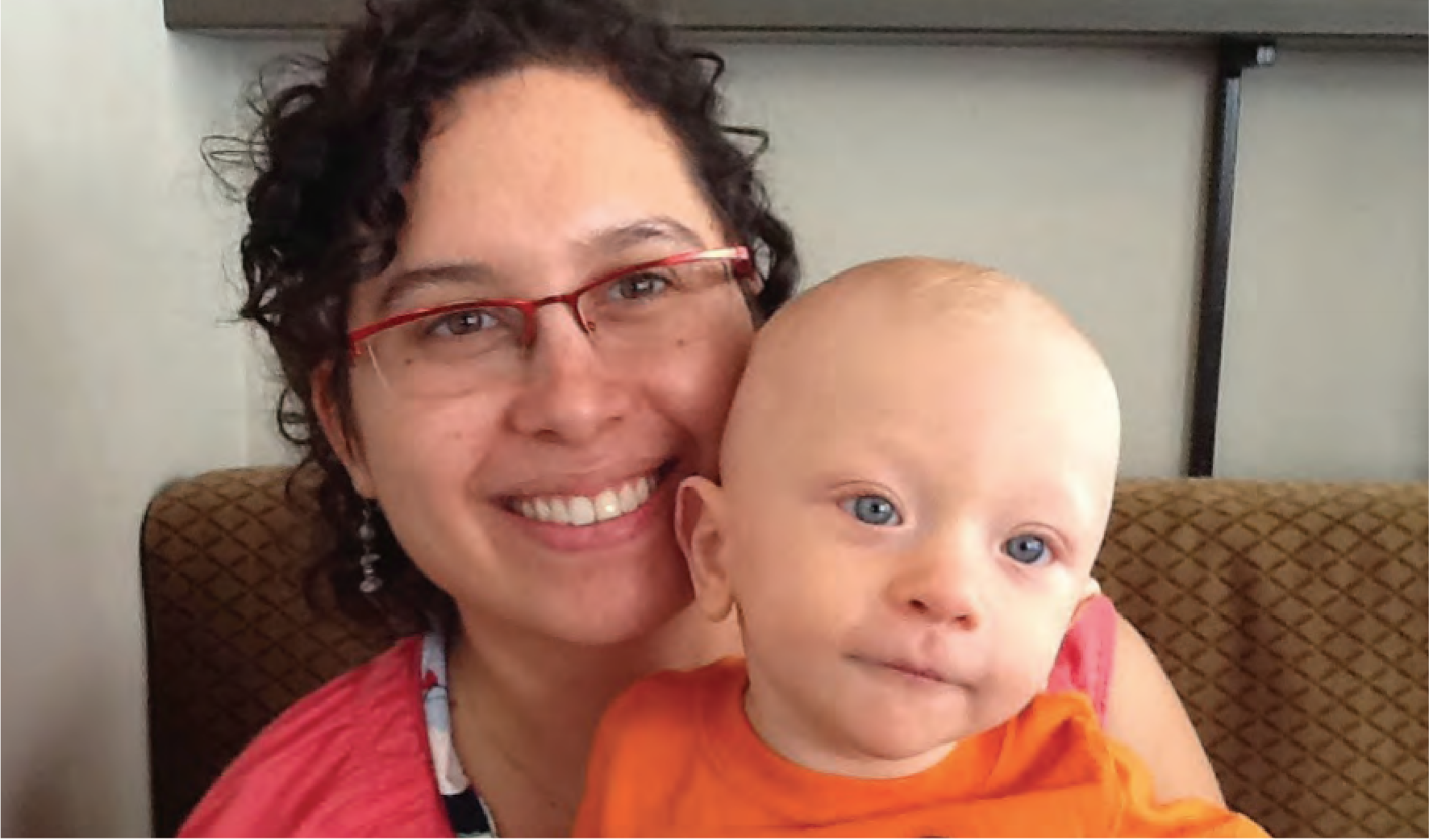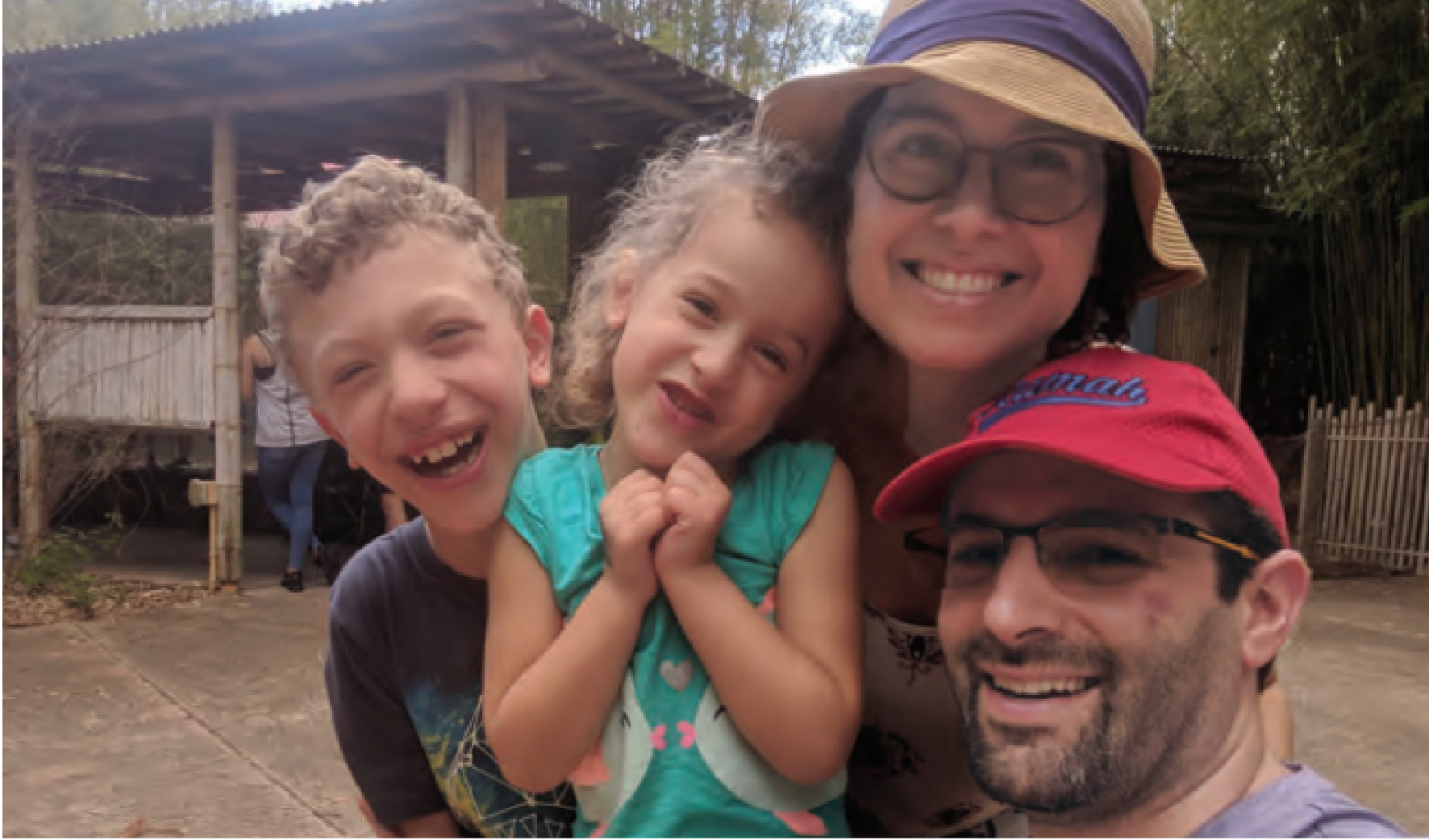From Graduate to Advocate
Author: Beverly Ford, MGH Institue of Health Professions
Published On: 03/04/2020

When Rachel (Miller) Sakofs earned her Master of Science in Speech-Language Pathology in 2007, little did she know how important a role her MGH Institute education would play in her family’s life.
 It all began several years ago when she noticed her son, Amit, was not developing as a typical 18-month-old should. “He wouldn’t just go through the middle of the room to get a toy. He’d crawl over furniture, go under the couch,” she recalls. “He’d find the most constrictive way to get there. He was always seeking out ways to be squeezed or touched, and he was seeking these things out from his environment. His own body wasn’t providing the integration that it should, so he was seeking it from the outside world.”
It all began several years ago when she noticed her son, Amit, was not developing as a typical 18-month-old should. “He wouldn’t just go through the middle of the room to get a toy. He’d crawl over furniture, go under the couch,” she recalls. “He’d find the most constrictive way to get there. He was always seeking out ways to be squeezed or touched, and he was seeking these things out from his environment. His own body wasn’t providing the integration that it should, so he was seeking it from the outside world.”
It turns out Amit wasn’t just seeking out sensory stimulation. There were other red flags as well. Unsteady on his feet, his balance always seemed a bit off, his motor skills not up to par for his age, and his language skills behind those of other children. Sakofs, who was working in a private practice, recognized many of these early warning signs because of what she learned from IHP faculty, especially Gregory Lof, Howard Shane, and Sharon Weiss-Kapp, all of whom were influential in developing her critical thinking processes. “Every area of functioning was atypical,” she says of those early days. “I just felt there had to be some underlying reason for all of these delays.”
Around Amit’s third birthday, she noticed something else. Light brown marks, called café au lait spots, had begun to form on his skin. Her pediatrician suspected the boy had a genetic disorder and referred them to a genetic counselor, who urged Sakofs and her husband, Justin, to get their son tested.
“We were honestly scared of the outcome,” she recalls of those frightening days. “We had been grasping at straws, trying all kinds of different therapies and strategies, wondering ‘Will this work? Will that work?’ So we didn’t know what to expect.”
It took nearly a year for a diagnosis, and when the news came back it wasn’t good. Amit had neurofibromatosis type 1 (NF1), the most common form of three similar genetic disorders that develop in one out of about 2,500 births. The disease, which usually manifests between the ages of 10 and 20, is often marked by the presence of noncancerous tumors, typically found along nerve pathways. Depending on where those tumors, called neurofibromas, are located— whether the brain, spine, or nerves— complications including severe pain, hearing or vision loss, learning impairment, or cardiovascular issues can develop. For Amit, this diagnosis explained his developmental challenges in balance, walking, language, feeding, and sensory processing.
form of three similar genetic disorders that develop in one out of about 2,500 births. The disease, which usually manifests between the ages of 10 and 20, is often marked by the presence of noncancerous tumors, typically found along nerve pathways. Depending on where those tumors, called neurofibromas, are located— whether the brain, spine, or nerves— complications including severe pain, hearing or vision loss, learning impairment, or cardiovascular issues can develop. For Amit, this diagnosis explained his developmental challenges in balance, walking, language, feeding, and sensory processing.
The diagnosis brought a kind of relief to a family that had long wondered what they could do to help their child. Now, shortly after Amit’s fourth birthday, at least there was a name for the disorder, an awareness of what they might expect, and access to a network of families that were dealing with the same challenges. What it couldn’t do, however, was offer a cure.
Read Rachel’s full cover story in the MGH Institute of Health Profession’s winter edition of their magazine.
Want to view archived newsletters? Click Here!
Newsletter
Sign up to receive the latest neurofibromatosis news and information in your inbox!
Subscribe